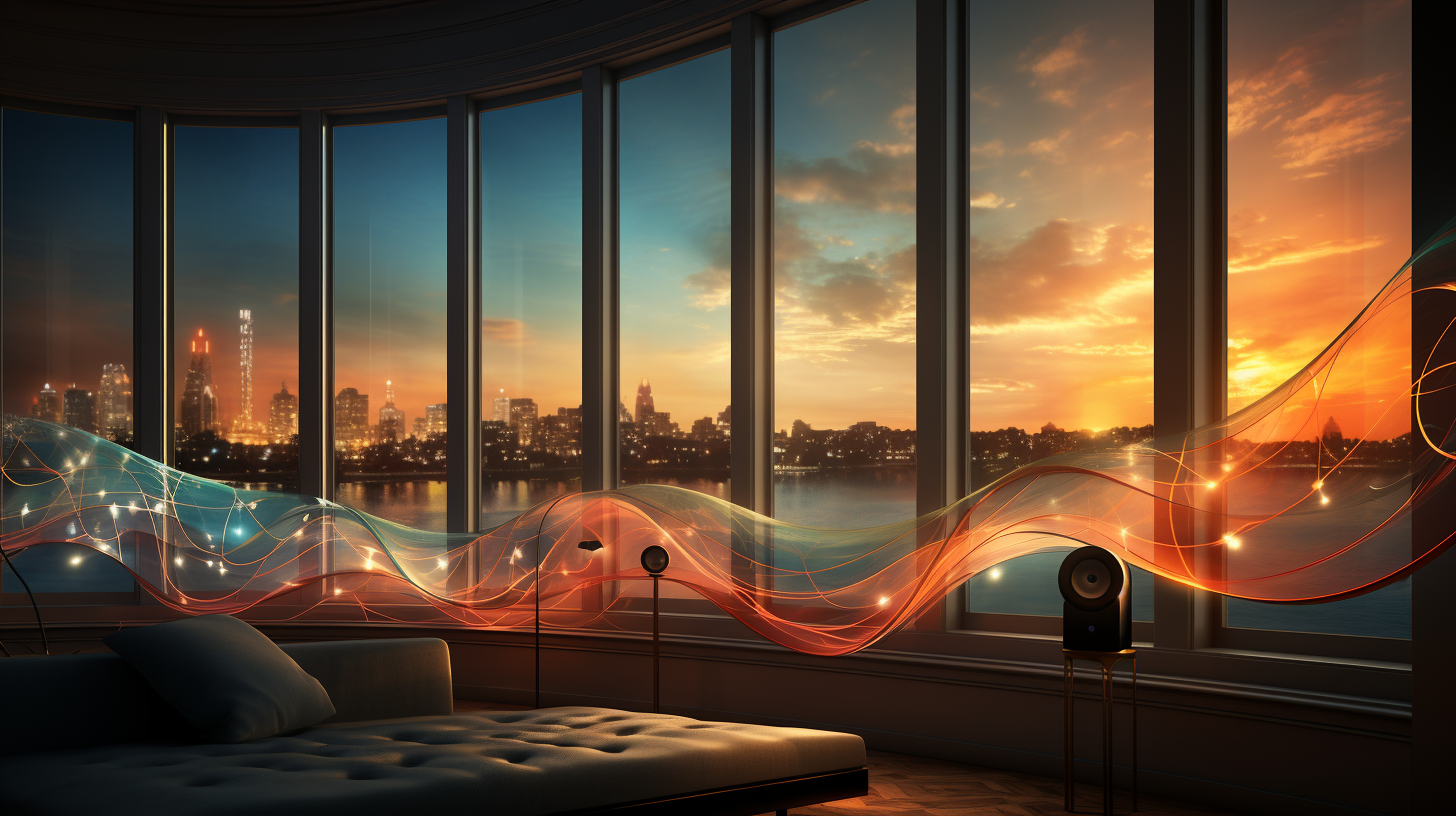Ever settled into a hotel room only to be kept awake by the symphony of noises seeping through the walls? It’s a common scenario, revealing that true soundproofing in hotels is more myth than reality.
In a world where peace is promised but seldom delivered, understanding the shortcomings of hotel soundproofing is crucial for both guests and hoteliers alike.
Let’s dive into the nuances of why silence is such a sought-after yet rare commodity in hotels, and discover how to find that much-needed quietude on your next stay.
Understanding Soundproofing Challenges in Hotels

The concept of soundproofing is crucial in hotel design, but the reality often falls short of creating the silent, serene environments that are vital for guest satisfaction.
While hotels may attempt to minimize noise, the complexities of soundproofing—coupled with cost constraints and architectural limitations—mean that complete sound isolation is rarely achieved.
Effective soundproofing would require an intricate blend of materials and design, a deep knowledge of acoustics, and a true dedication to the comfort of guests, which is not always the practice case.
In the hospitality sector, the idea of soundproofing extends beyond simply lowering the volume of outside noise.
It’s about ensuring a tranquil space where guests can have private conversations, enjoy quietude, and avoid the annoyances of neighboring rooms.
However, the typical experience often includes disruptions from hallway chatter, elevator dings, and the muffled but distinct sounds from adjacent rooms.
The variance in soundproofing effectiveness can be attributed to factors such as the age of the building, the quality of construction materials used, and external noise from sources like traffic and overhead planes.
Hotels may implement certain measures, like carpets and drapes, to create a sense of quiet, but these are not soundproofing solutions and provide minimal relief from external noise.
More sophisticated approaches, such as installing acoustic insulation or double-glazed windows, are often overlooked in favor of cost-saving measures.
As a result, guests are sometimes left to contend with noise pollution that can significantly impact their stay.
The inconsistency in soundproofing standards not only affects immediate guest comfort but also has long-term repercussions for a hotel’s brand and financial health.
Noise complaints can lead to negative reviews, which in turn can influence potential guests’ booking decisions.
While a hotel’s location and amenities may be appealing, the failure to prioritize Effective soundproofing can compromise guest loyalty and the ability to maintain competitive room rates.
Thus, despite soundproofing being a priority in theory, the practical reality is that many hotels are not soundproofed to an extent that ensures peace and quiet for their guests.
The Reality Of Hotel Soundproofing
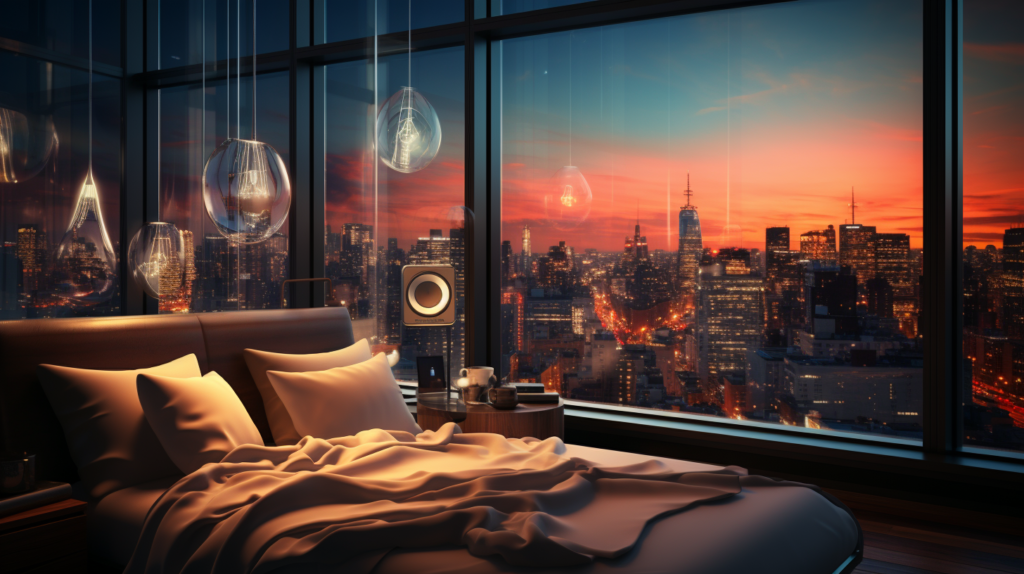
The stark reality of hotel soundproofing is that it often falls short of guests’ expectations. Despite advancements in soundproofing technology, many hotels, particularly older establishments or those constructed with budget constraints, struggle to provide an adequately soundproofed environment.
This is compounded by the diverse sources of noise that a hotel must contend with, from the clamor of urban settings to the varied activities and mechanical systems within the hotel itself.
Guests frequently express dissatisfaction with noise levels during their hotel stays.
The reasons are numerous: thin walls allow conversations to be heard from room to room, hallway noises disrupt the peace, and even the low drone of air conditioning units can become a source of irritation.
In many cases, these problems are exacerbated by the hotel’s location in noisy, high-traffic areas where the sounds of the city encroach upon the guest’s space.
While luxury hotels may have the resources to invest in state-of-the-art soundproofing, budget and mid-range hotels often must make difficult choices about where to allocate their funds.
The difference between soundproofing in these categories of hotels can be stark, with budget hotels typically offering minimal soundproofing and luxury hotels providing more comprehensive solutions.
The economic perspective is a significant factor in these decisions; comprehensive soundproofing can be a substantial line item in a hotel’s budget, and not all hoteliers are willing or able to prioritize it over other amenities and aesthetic upgrades.
Hotel guests today are more informed and have higher expectations than ever before. In the age of online reviews and social media, a single noise-related complaint can reach a wide audience and deter potential guests.
Thus, hoteliers are increasingly recognizing the importance of soundproofing, not just for guest comfort but for the overall success and reputation of their establishment.
A hotel’s ability to provide a quiet, peaceful environment is becoming a crucial differentiator in the marketplace, and those that fail to adequately soundproof their premises may find themselves at a significant competitive disadvantage.
How Sound Travels In A Hotel

The journey of sound through a hotel is a complex phenomenon influenced by the interplay of various architectural and material factors.
Sound waves, the invisible carriers of noise, can travel through both air and solid materials, potentially disrupting the calm in guest rooms.
These waves can transmit voices from one room to another, carry the clatter of luggage wheels across a tile floor, or let the roar of city traffic invade through a slightly ajar window.
In a hotel, sound can find its way through numerous avenues: it can seep through electrical outlets, sweep under doors, resonate through pipes, and even cascade down stairwells.
Sound can also travel between walls and floors, a concept known as flanking, where noise bypasses a direct path and instead finds alternative routes—often through the structural elements of the building.
This can mean that even if a wall itself is soundproofed, noise can travel along these ‘flanking paths’ and still enter a room.
Hotel architects and builders must therefore think beyond the direct path of sound and address these indirect routes.
This involves using a combination of materials that absorb sound, break up the pathways that allow sound to travel, and dampen the vibrations that transmit noise.
Design elements like staggered stud walls, floating floors, and acoustical ceilings can be implemented to reduce sound flanking.
Yet, the challenge remains significant due to the myriad of sources and paths noise can take, making absolute silence a difficult goal to achieve.
The Anatomy Of Hotel Walls
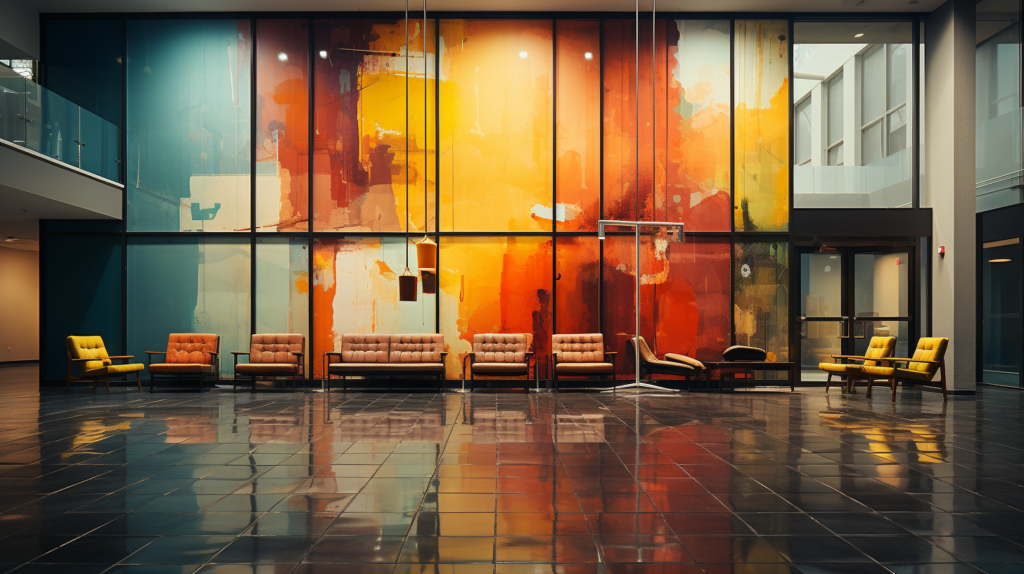
The walls in many hotels, which could significantly benefit from robust soundproofing measures, often fall disappointingly short.
The hollow nature of these partitions, coupled with a lack of sound-absorbing foam or other specialized acoustic materials, means that noise readily travels through.
The absence of metal studs, which can sometimes add a degree of density and reduce sound transmission, points to the reality that cost and construction efficiency often take precedence over the acoustic comfort of hotel guests.
These walls, typically framed with wooden studs and filled with minimal insulation before being sealed with drywall, are simply not equipped to dampen the symphony of sounds that characterize a bustling hotel.
The soundproofing that is present—if any—is usually inadequate, allowing noises from adjacent rooms and corridors to penetrate into what should be a private retreat.
Without the inclusion of sound-dampening elements like thick insulation, resilient sound channels, and comprehensive sealing, guests are left to contend with an auditory landscape that can disturb the peace they seek in their accommodations.
Ceilings And Floors: Overhead Noise In Hotels

When it comes to the challenge of noise in hotels, the disturbances coming from ceilings and floors are among the most troublesome.
The thud of footsteps, the dragging of chairs, and the energetic leaps of children reverberate through these structures with an unsettling intensity.
Known as impact noise, these sounds are particularly difficult to silence, given their tendency to induce vibrations that ripple through the very skeleton of the building.
Hotel construction often tries to strike a delicate balance between durability, aesthetics, and sound dampening, but the latter frequently falls by the wayside.
While solutions like acoustic ceilings and floating floors exist, they are not universally implemented due to the significant costs and complexities involved in their installation.
Furthermore, these soundproofing measures are often secondary considerations, overshadowed by structural and design priorities.
The choice of flooring materials adds another layer to the noise dilemma.
Hard surfaces, which are favored for their longevity and ease of maintenance, invariably fail to offer the sound-absorbing qualities of softer options like carpets.
As a result, the clamor of overhead activity becomes a pervasive presence in many hotel rooms, despite the available acoustic advancements that are often deemed too costly or impractical to incorporate into the standard hotel construction or renovation budget.
The Problem With Hotel Doors And Windows
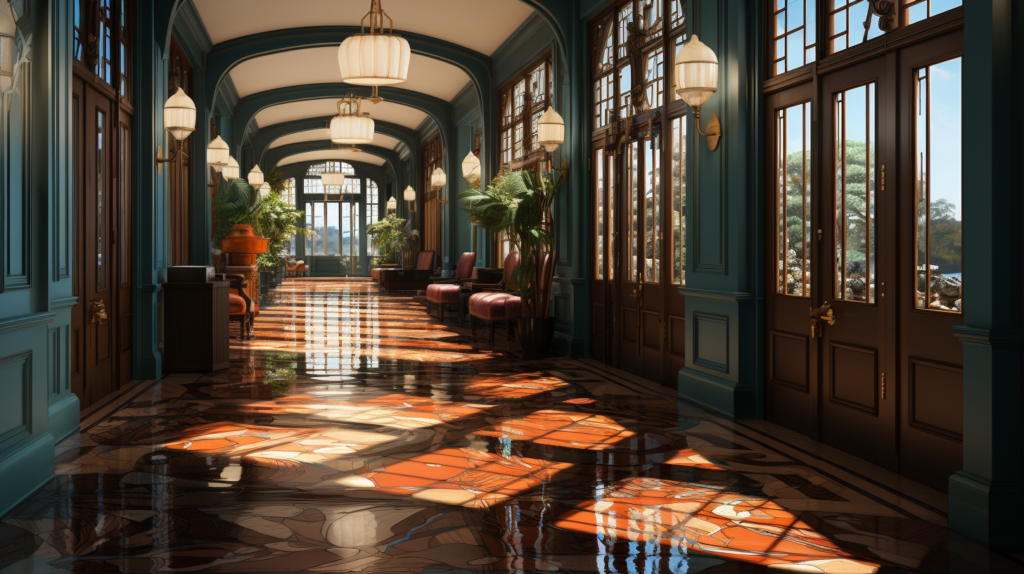
Doors within hotels are pivotal for ensuring guest security and privacy, yet they frequently fall short in their role as sound barriers, betraying the quietude of the rooms they enclose.
Despite the solid construction expected for safety and fire regulations, the absence of proper acoustic seals often means that even the heftiest doors are no match for intrusive noise.
The necessary gaps for operational functionality and ventilation further exacerbate the problem, creating weak points that readily permit the intrusion of external sounds, diluting the effectiveness of otherwise substantial doors.
Windows, when permanently sealed and equipped with soundproof glass, tend to perform better in noise exclusion, particularly when they are crafted to form airtight seals.
In such cases, windows become formidable barriers to the cacophony of the outside world, especially in the concrete jungles of urban hotels.
However, this level of soundproofing is often reserved for windows that do not open, as the capability for ventilation introduces complexities in maintaining a noise-resistant seal when closed.
For doors, the path to tranquility lies in bolstering them with acoustic seals and sweeps, which are crucial in minimizing gaps and solidifying the door’s defense against noise.
While these measures offer a path to improved acoustic privacy, the financial implications often sway hotel operators to opt for less-than-ideal soundproofing solutions, leaving guests to grapple with the reverberations of hallway activity and the echoes of neighboring chambers.
The Economic Perspective Of Soundproofing In Hotels
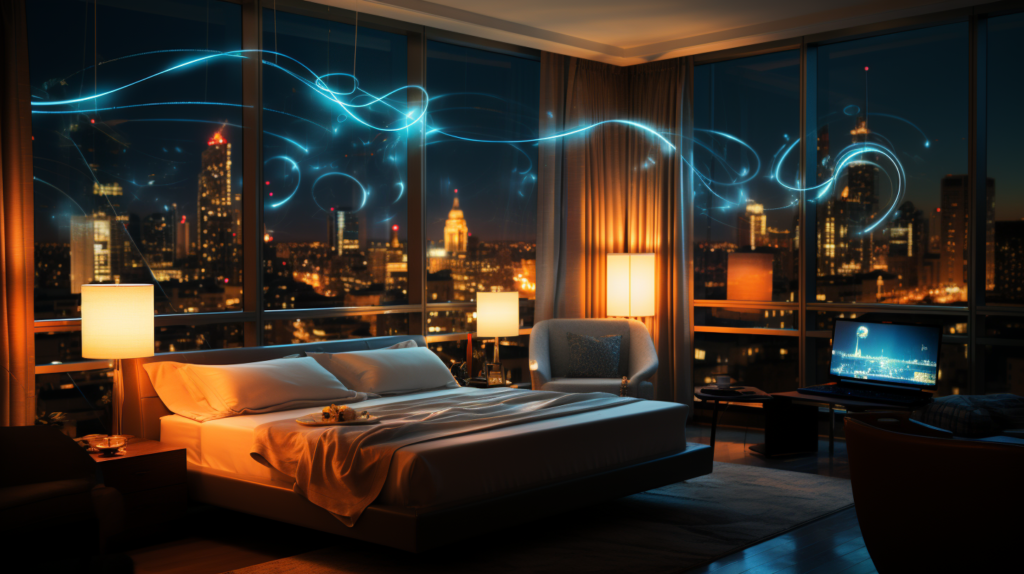
The economic implications of soundproofing in the hotel industry are significant and multifaceted. Initial construction or renovation costs must be balanced against the potential for increased revenue and repeat business.
High-quality soundproofing requires a larger upfront investment, but it can lead to higher room rates, improved guest satisfaction, and positive reviews—all of which can contribute to a hotel’s long-term success.
Hoteliers must consider the demographic they aim to serve. Business travelers, for example, may prioritize a quiet room for rest and work above all else, while leisure travelers might be more forgiving if other amenities are exceptional.
The decision to invest in soundproofing also hinges on the hotel’s location; properties in noisy urban areas or near airports may find that soundproofing is not just a luxury, but a necessity for attracting and retaining guests.
Long-term maintenance costs must also be considered, as soundproofing materials and installations can require upkeep to maintain their effectiveness.
Additionally, as standards and expectations for quiet accommodation rise, hotels without adequate soundproofing may face the cost of negative reviews and the need for reactive measures.
Investing in soundproofing can thus be seen as a preventative measure that not only enhances the guest experience but also protects the hotel’s market position.
Practical Tips For Guests Seeking Quiet

Guests looking for a peaceful stay can employ various strategies to find the quietest rooms in a hotel.
A bit of research before booking can reveal which hotels prioritize soundproofing, and direct communication with the hotel can secure a room in a quieter part of the building.
Upon booking, requesting a room on a higher floor, away from elevators and ice machines, and specifying the desire for a quiet room can be beneficial.
Once at the hotel, guests should inspect their room for potential noise issues and feel empowered to request a room change if necessary.
Being proactive about potential noise can prevent sleepless nights and ensure a more enjoyable stay. If noise issues arise during the stay, guests should report them promptly to the front desk.
Many hotels are willing to provide solutions, such as moving the guest to a different room or offering complimentary earplugs.
Travelers can also take matters into their own hands by bringing along noise-canceling headphones or a white noise machine.
These devices can help mask external noise and create a personal bubble of quiet.
Additionally, apps that produce soothing sounds or white noise can be downloaded to smartphones or tablets, offering a portable and convenient way to drown out unwanted noise.
Conclusion
The struggle for silence in hotels highlights a clear discrepancy between guests’ needs and the current state of soundproofing.
The issue is not merely one of comfort but of ensuring a quality experience that aligns with the reputation and perceived value of a hotel.
As travelers become more vocal about their preferences, the industry must prioritize effective soundproofing to maintain competitiveness.
Economically, the costs of soundproofing are an investment in customer satisfaction and retention.
While immediate expenses may seem daunting, the long-term benefits of positive reviews and repeat business can outweigh these costs.
For the discerning traveler, the take-away is to seek out those hotels that do invest in peace and quiet and to use modern solutions like noise-canceling technology as a supplement.
In summary, the future of hotel design must include a stronger focus on soundproofing as a fundamental aspect of guest service.
Both travelers and hoteliers have a role to play in achieving the shared goal of a peaceful stay.
With this focus, the hospitality industry can hope to offer not just a place to stay, but a sanctuary of quiet in an otherwise noisy world.
